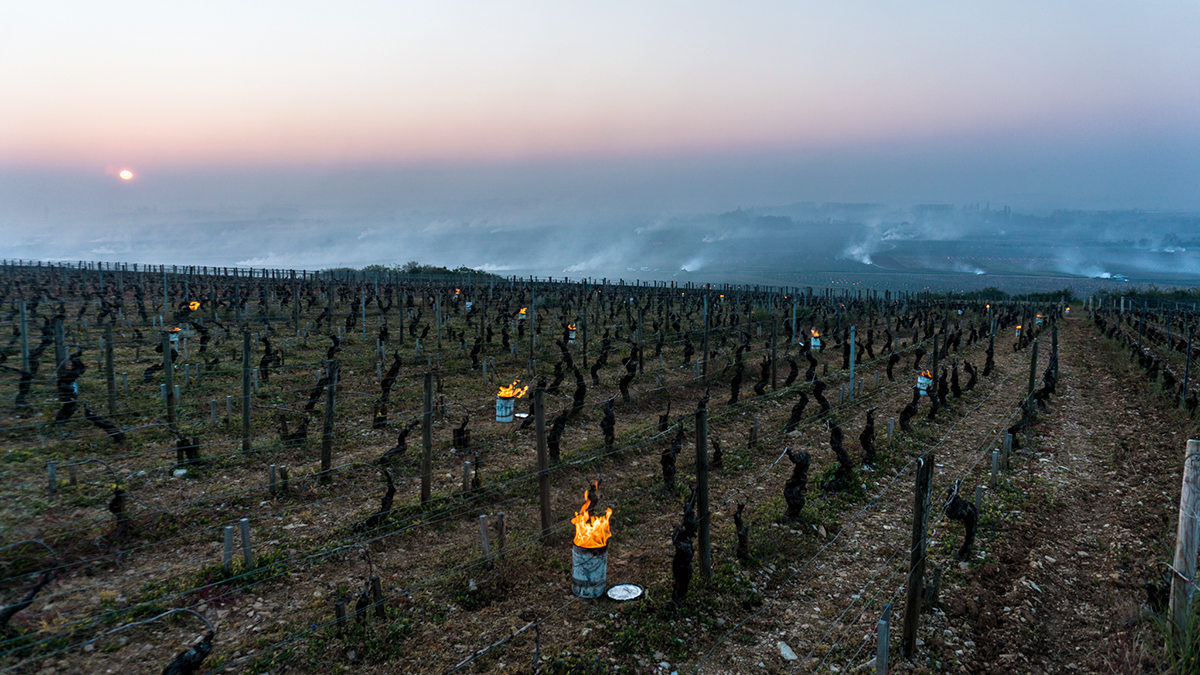
Ansonia Journal: Climate Change
April 14, 2021
In France, the concept of terroir — an expression of place — is a wine’s highest calling. But it’s only one of many contributors to the finished product. A vigneron makes countless decisions while crafting a wine — pruning, harvesting, fermenting, racking, oaking, cellaring, and more — each of which leaves an imprint on its character.
But control over one important variable eludes even the most dedicated winemakers: the whim of Mother Nature. The patterns of the growing season have a powerful effect on a wine, an element that has become even more notable as the planet has warmed over the last few decades.
A vigneron’s most important job is his or her role as a farmer. And as for any farmer growing any crops around the world, the effects of climate change have become impossible to avoid.
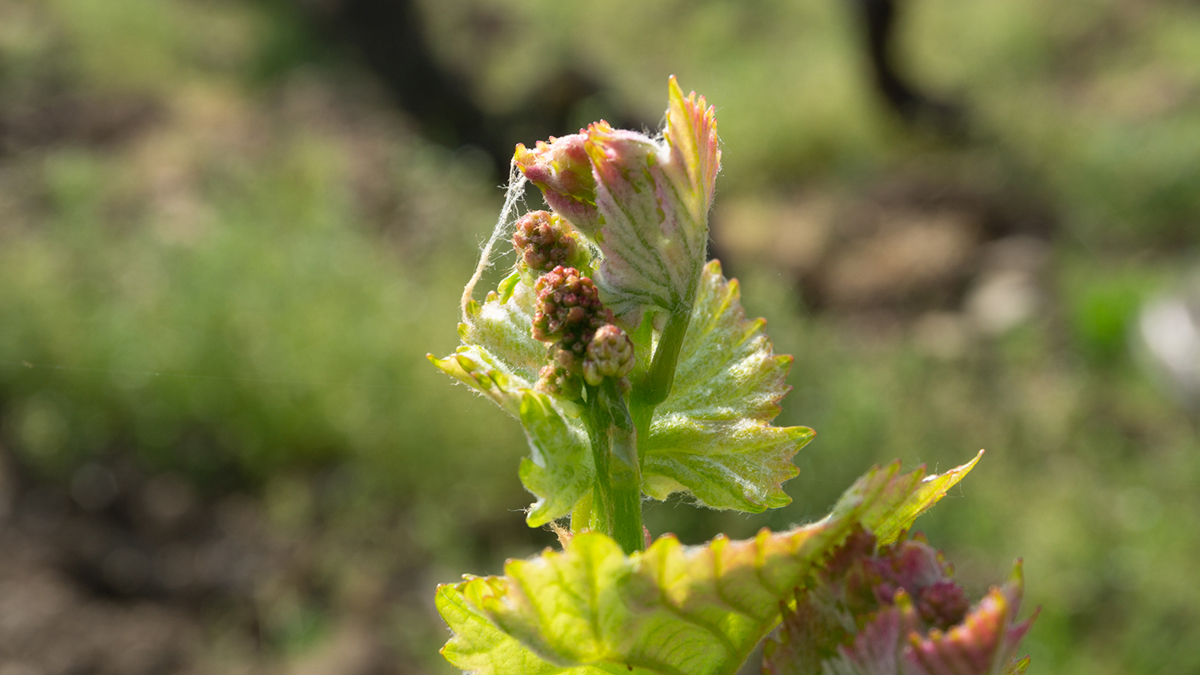
How does climate change affect the vines?
Climate change has shifted the grape growing season earlier in the year. Historically the 100-day growing cycle would begin with flowering in June and conclude with harvest in mid-September. Warmer springs have pushed this cycle earlier, with flowering in May and harvest pushing into August. Michel Gros, who recently celebrated his 40th consecutive harvest leading his family domaine in Vosne-Romanée, estimates the harvest date has moved three weeks over his tenure.
The most immediate and problematic result of an early growing season is a dramatically increased risk of spring frosts. An earlier season means that vines begin to push their first buds as early as March, leaving an entire month at risk of freezing temperatures. As we write this in April 2021, winemakers across France are picking up the pieces from a devastating three-day spring frost, where temperatures plunged to -5 C in places. The full extent of the damage remains to be seen, but many have called it the worst in a quarter century. Vines that lose buds to frost produce far fewer bunches of grapes, and some produce none at all. Spring frosts in recent years have devastated parts of Burgundy, with winemakers sometimes losing 70% of their potential crop in a single frigid night.
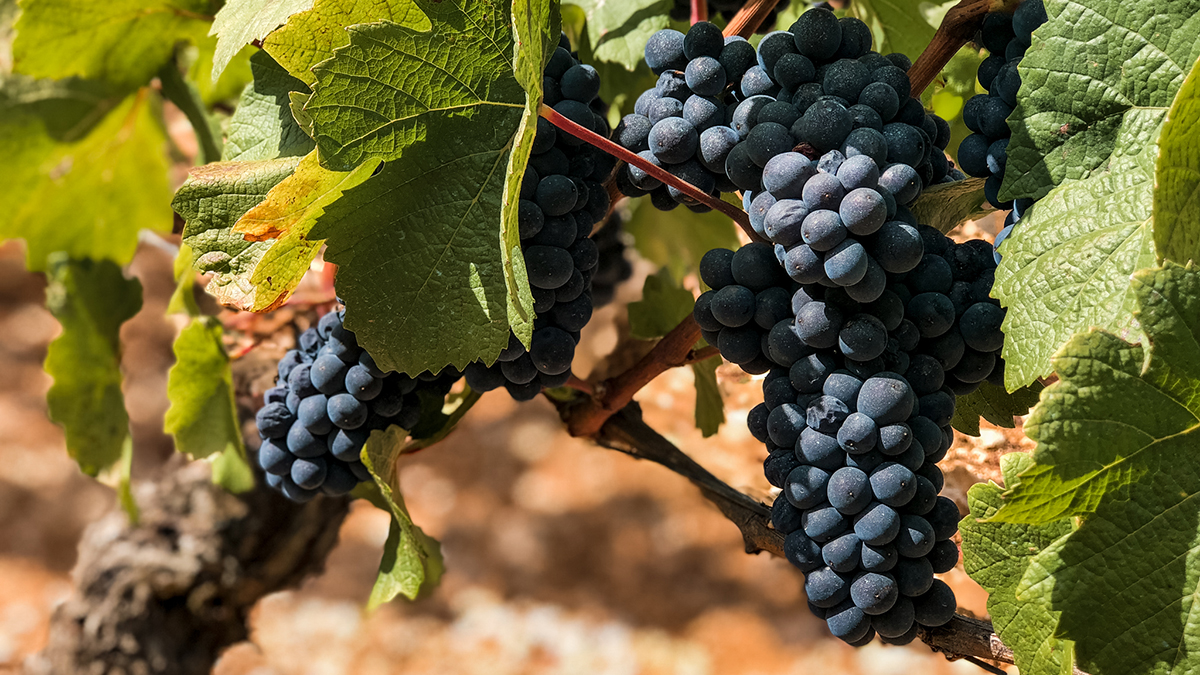
The all-important decision of when to harvest has become more difficult as well. Winemakers monitor two types of ripeness in the grapes: sugar ripeness (the amount of sugar in the berry) and phenolic ripeness (the maturity of the skins). Recent hot summers have widened the gap between these two metrics, with sugar ripeness often noticeably preceding phenolic ripeness. Pick too early and the sugars may be correct but the skins underripe; pick too late and the skins are ripe but the sugar (and alcohol levels) too high.
Finally, warming temperatures have been a struggle for the vines themselves. With soils drying faster than usual in the summer sun, the vines must stretch deeper in the soil to find water. This has given an advantage to older vines whose extensive root systems are better established. Vines planted more recently may be starved for water, and can fail to yield much fruit.

What does this mean for the wines?
As the grapes have changed character, the wines have followed suit. The most noticeable difference is alcohol levels. Riper grapes mean more sugar, which means higher alcohol. Dany Chastan of the Clos du Joncuas in Gigondas recounted a childhood memory of her parents celebrating when their wines reached as high as 13% alcohol. “Now,” she told us, “we’re lucky if we can keep it below 15%.” Higher alcohol wines have naturally higher pH, meaning less acidity. And while we’ve been impressed with winemakers’ ability to “find” freshness and balance in crafting even high alcohol wines, the textures and mouthfeel are unmistakably different.
Phenolic ripeness — the level of ripeness in the skins — has increased alongside sugar ripeness. With more sun exposure, the skins themselves have become ripe faster, and in some places risk being “sunburnt” or dried out by overexposure. A higher skin-to-juice ratio in grapes produces increased concentration (usually a good thing) but means winemakers must be careful not to over-extract their wines during fermentation.
Climate change has also shortened the growing season, changing the nature of tannins in the red wines. In Burgundy in 2018 the 100 day growing season was on average shortened to 80 days. A longer growing season produces silkier, finer tannins which help wines age and develop gracefully over their lifetimes. Shorter seasons result in more rustic tannins, whose ability to age is less certain. Regions like Champagne, Chablis and Alsace lean heavily on acidity for their signature expression, and increased sugars and earlier harvests have made preserving acidity more difficult.
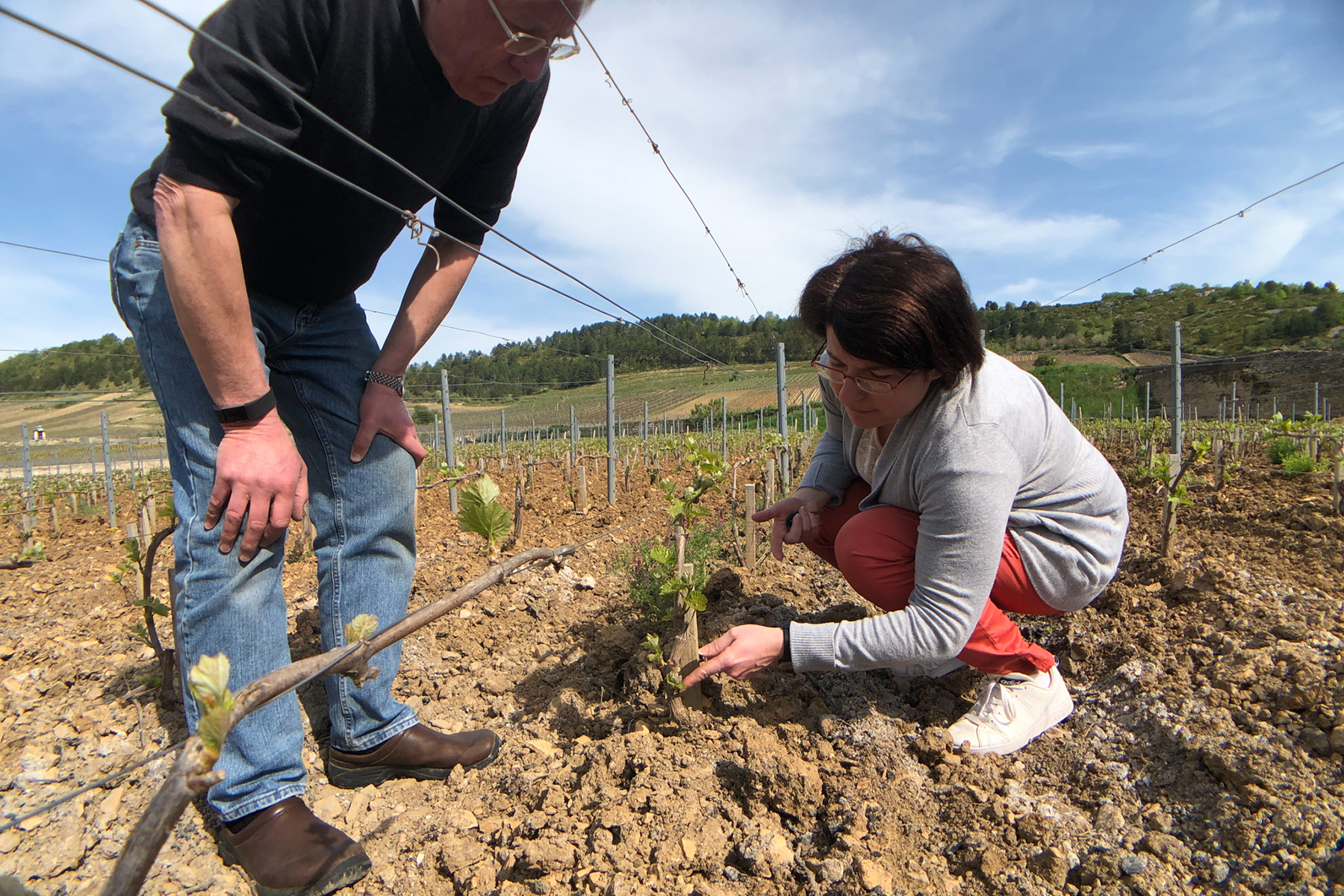
How are winemakers adapting?
Most winemakers we work with have a somewhat stoic attitude toward climate change: “it’s here, it’s changing our jobs, so let’s be proactive and adapt.” In the vineyards many have adjusted the way they prune and train their vines. Some now delay their winter ploughing, allowing the vines to lie dormant a few extra weeks before waking up in the spring — all in the hopes of slowing the start of the growing cycle.
To combat spring frosts winemakers have a range of techniques. In some areas, an entire winegrowing area will band together to burn bales of straw in the early morning, creating a cloud of smoke that blocks the sun’s damaging rays from the frozen buds. Others use large fans (or even helicopters) to circulate air and ward off the frost. More commonly, winemakers will light small fires or candles between the vines to raise the temperature among the rows. This is both labor intensive and quite expensive — after a frost one winemaker in Chablis told us he had just spent most of his profit from the upcoming year on candles to protect the buds. And all of these actions only make a degree or two of difference — growers are mostly helpless when the temperature goes below -3C.
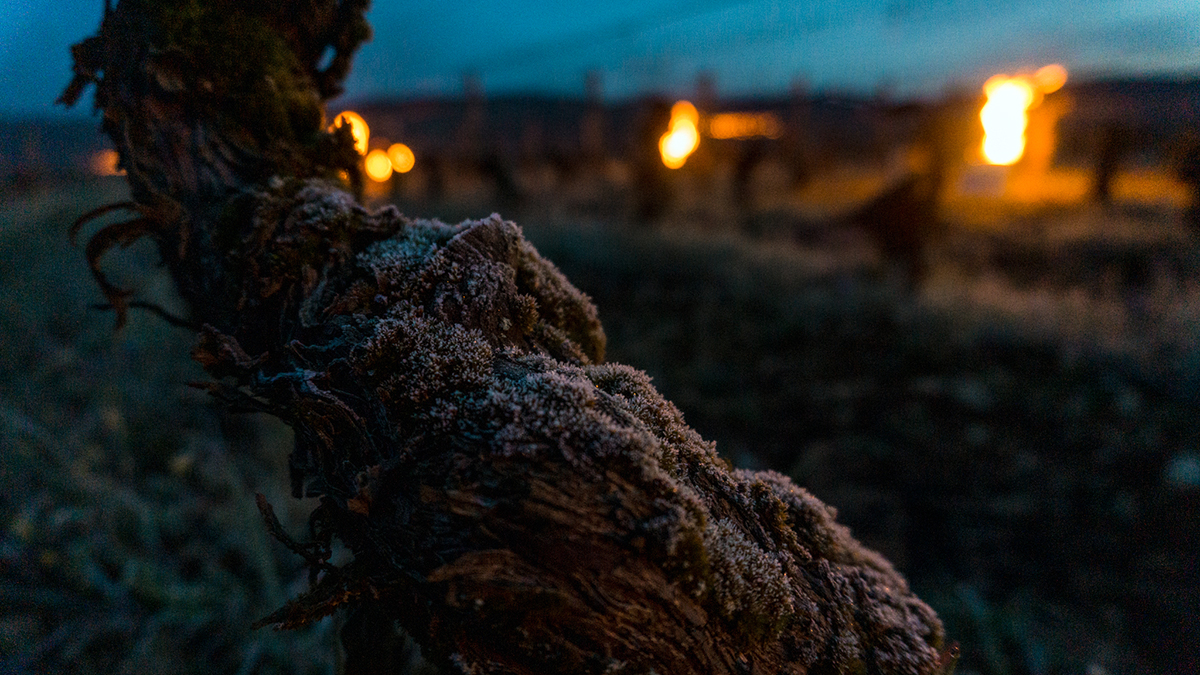
Leaves play an important role in the physiology of grape vines, converting sunlight into energy. But increasingly they also shade the bunches of grapes from the hot sun, and winemakers now often allow their canopies to grow higher and prune less vigorously. Too many leaves, however, restricts airflow, trapping humidity among the vines and encouraging oidium and mildew. Some growers now train the shoots of their vines in different shapes to promote airflow and keep the grape bunches dry and healthy.
With harvest dates shifting from fall to late summer, the temperature at harvest has become much higher. Winemakers strive to keep their fruit cool as it arrives at the domaine, as controlling the temperature during fermentation is crucial for maintaining freshness. Berries that arrive too hot can burst and oxidize before the fermentation begins. To combat this, some growers now begin picking earlier in the morning, take a longer break in the mid-day sun, and then resume later in the afternoon. Others employ cooling rooms to keep the bunches cold during sorting and fermentation.
Many domaines have begun to add more stems to their fermentation tanks. (See our recent Journal post on use of stems in winemaking.) Stems give the wine an increased tannic structure, something often lacking in very ripe wines. But stems also increase the levels of potassium in the juice, which raises the pH (lowering the acidity), which can further drive the wines out of balance.
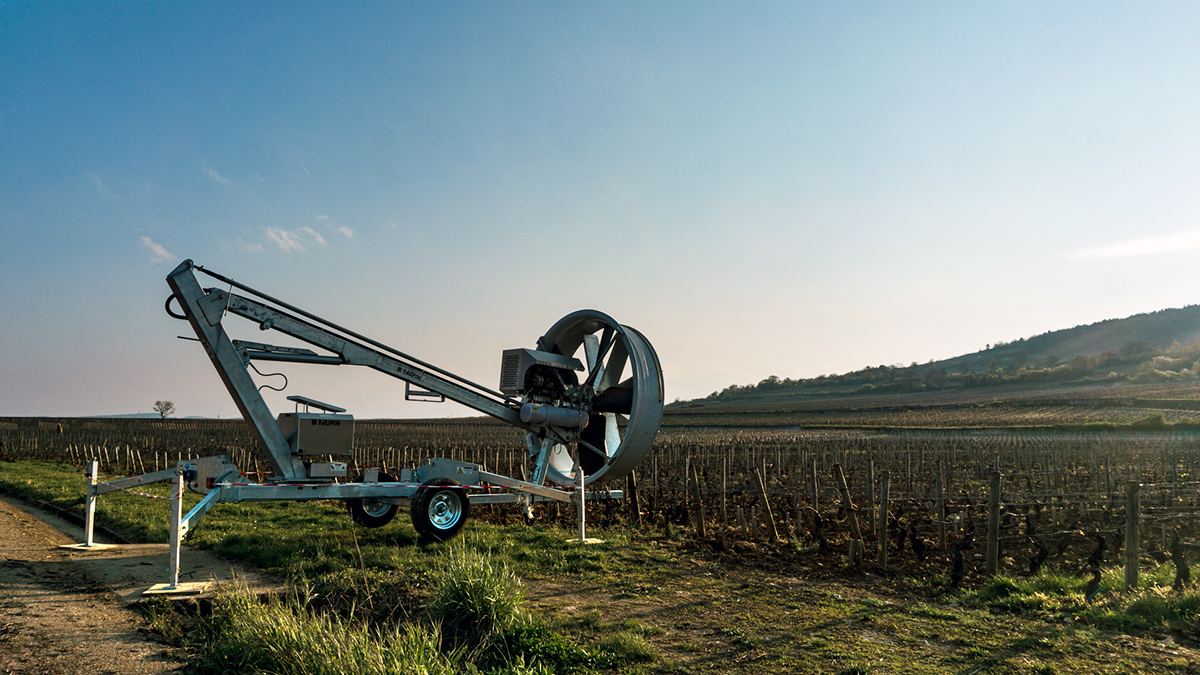
The changing climate has pushed winemakers to reexamine their grapes and vineyard sites as well. Bordeaux famously has approved a new series of hot-weather grapes to be permitted in their blends, though winemakers have been slow to adopt them. In Burgundy, the vineyards in the Hautes-Côtes de Nuits are producing increasingly successful and impressive wines. With cooler vineyards around 100m higher than the famous Côte de Nuits, the “Hautes-Côtes” terroirs, historically on the margins of ripeness, now produce wines with real character and excellent balance. Similarly, towns in the Côte Chalonnaise known for their simpler petits vins have begun to produce more noteworthy and ageworthy cuvées.
Further afield, the market for English sparkling wine continues to grow briskly. The terroirs of southern England share a similar geological profile with Champagne across the channel, though for years the region was considered too cold to produce grapes with enough ripeness. Today that line of ripeness has shifted north, and even large Champagne houses have swallowed their Gallic pride and invested in vineyards across the Channel.
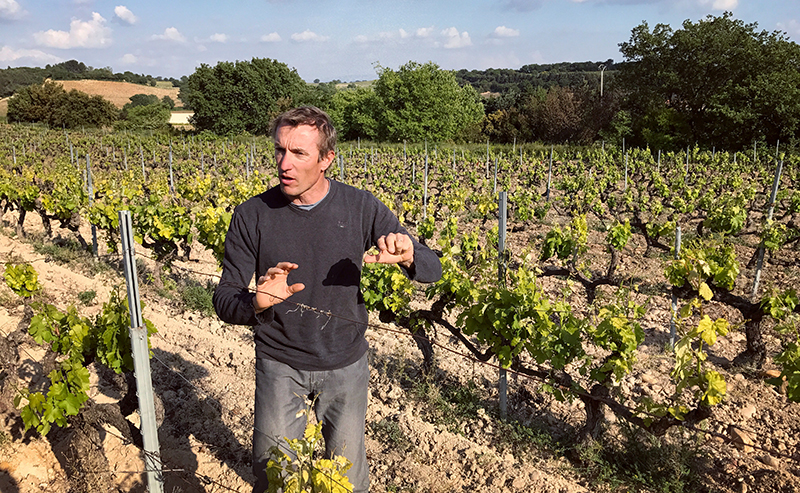
Are there any silver linings?
Climate change has created far more problems than solutions, but there are rays of hope amid the gloom. As mentioned above, previously marginal appellations have become sources for impressive wines and often excellent values.
In many regions the warmer, drier weather has meant less need for chemical treatments to keep the vines healthy. Aside from regions prone to humidity like Burgundy and the Loire Valley, the warmer climate has generally meant healthier grapes and cleaner bunches. With less need for vine treatment, more growers are adopting organic and biodynamic practices.
The consistency of ripeness is also a new and welcome development. In Bordeaux and Burgundy, vintages considered “underripe” were common just a few decades ago. Aside from the 2013’s damp October harvest, Burgundian winemakers have enjoyed over a decade of sufficiently ripe grapes. Chablis too, though especially prone to spring frosts, has enjoyed an unusual consistency of ripeness. If vignerons can avoid the increasingly common pitfalls of extreme weather conditions, their vines today can produce more and riper bunches.
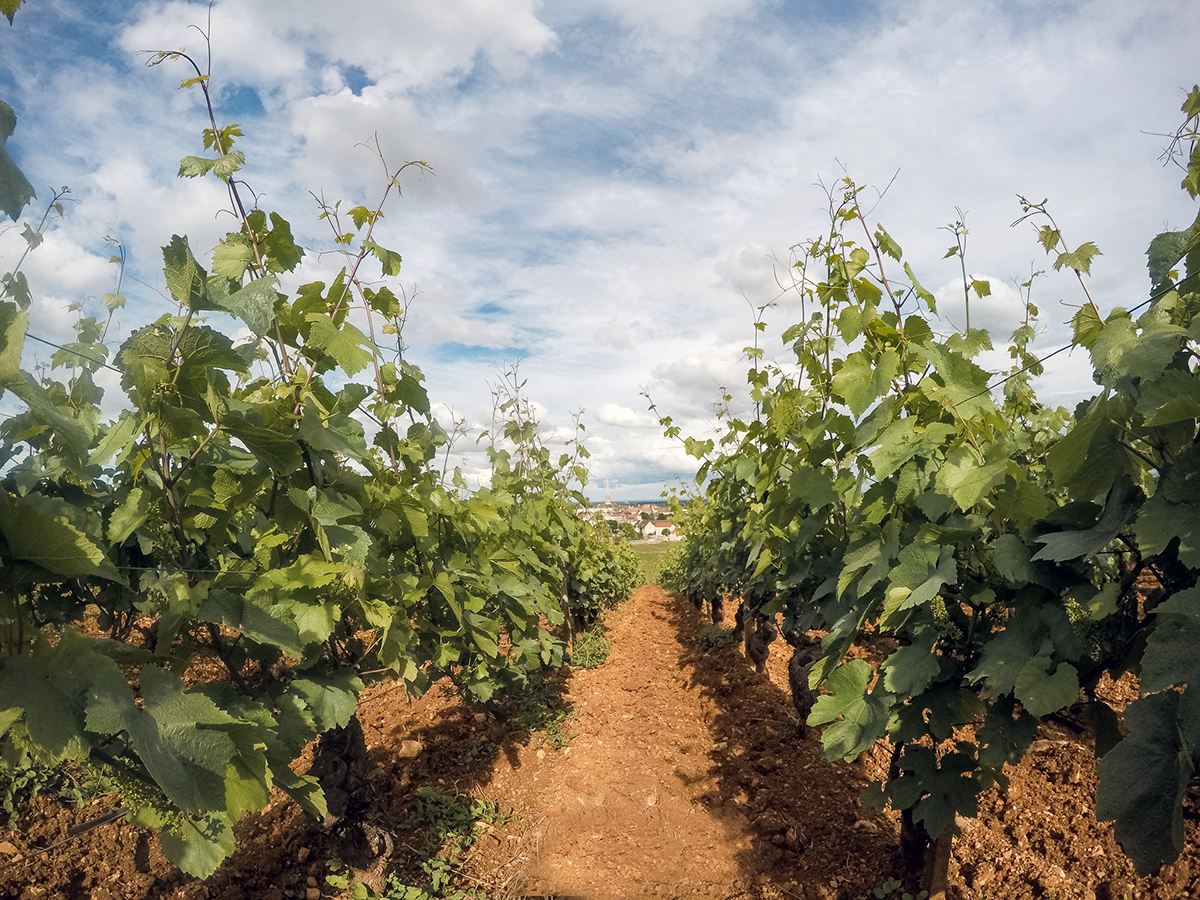
Conclusion
At the heart of winemaking in France is a tension between tradition and impermanence. Some families have been in the same business in the same town (often the same house) for centuries. In some ways, very little has changed: the smells and sounds emerging from ancient stone cellars; the teams of busy harvesters amid rows of vines in the fall; the magical transformation of simple grape juice into something subtle and complex.
But in other ways a winemaker’s world is one of constant change. Each year brings a new season of growth and a unique pattern of variables. Winemaking in France has endured through wars, famines and plagues; through changing tastes and huge technological advancements. Each generation brings new ideas, new preferences, and new opportunities.
Climate change may be the most serious and lasting challenge that winemaking has faced in recent memory, but the growers navigating its slings and arrows are a resilient bunch. In the end, our money is on them.
TW
____________________
